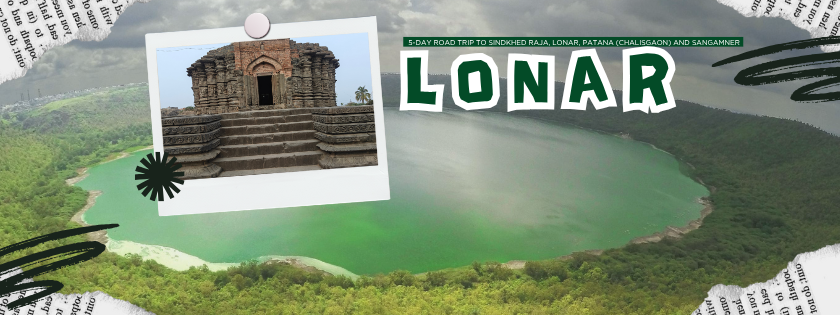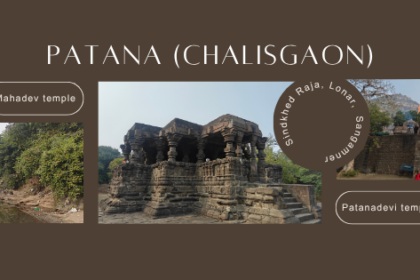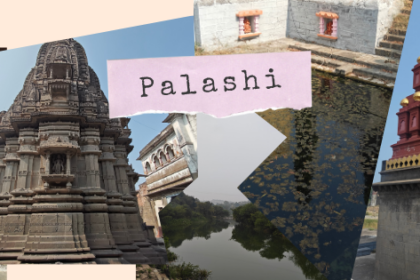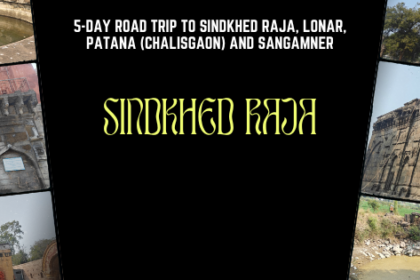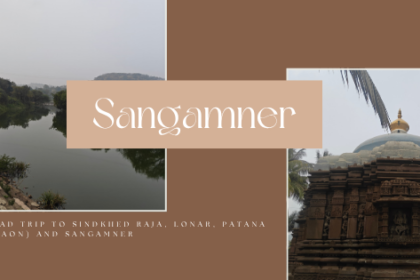To read the previous blog on Day 01: Sindkhed Raja click here.
Our 5-day road trip to Sindkhed Raja, Lonar, Chalisgaon, Sangamner and Palashi was a delightful blend of history, natural wonders, and serene landscapes. Here’s how we experienced the charm of these unique destinations:
Day 2 : The Mystical Lonar Crater and Temples
The day began with a trek to the iconic Lonar Crater. It is advisable to visit Lonar crater early in the morning as it becomes too hot post 9:30am. There is a parking lot and some street food shacks at the entrance of Lonar crater. Pets are strictly not allowed. There is washroom facility near the ticket counter. It is advisable to hire a tourist guide to show you all the temples around the crater. But there were no tourist guides near the ticket counter when we visited this place.
This natural wonder, formed by a meteorite impact, mesmerized us with its scale and biodiversity. The 3-hour trek around the crater was both refreshing and informative.
The Gomukh Dhar Temple is located at the starting point of the trail to Lonar Lake. Dedicated to Lord Shiva, this ancient temple dates back to the Chalukya Dynasty (12th to 14th centuries) and showcases the Hemadpanthi architectural style, characterized by intricate stone carvings and mortarless interlocking stone construction.
The temple derives its name, “Gomukh” (meaning “cow’s mouth”), from a sacred stream flowing from a cow-shaped stone structure within the complex. This water is considered holy and is used by devotees for rituals.
A beautifully maintained water pond adds to the temple’s charm, and restrictions on entry into the pond help maintain its cleanliness. The temple grounds also feature ancient structures with intricate carvings that narrate captivating stories of the past.
For the best experience, visit early in the morning when the peaceful ambiance and soft lighting make exploration and photography especially delightful.
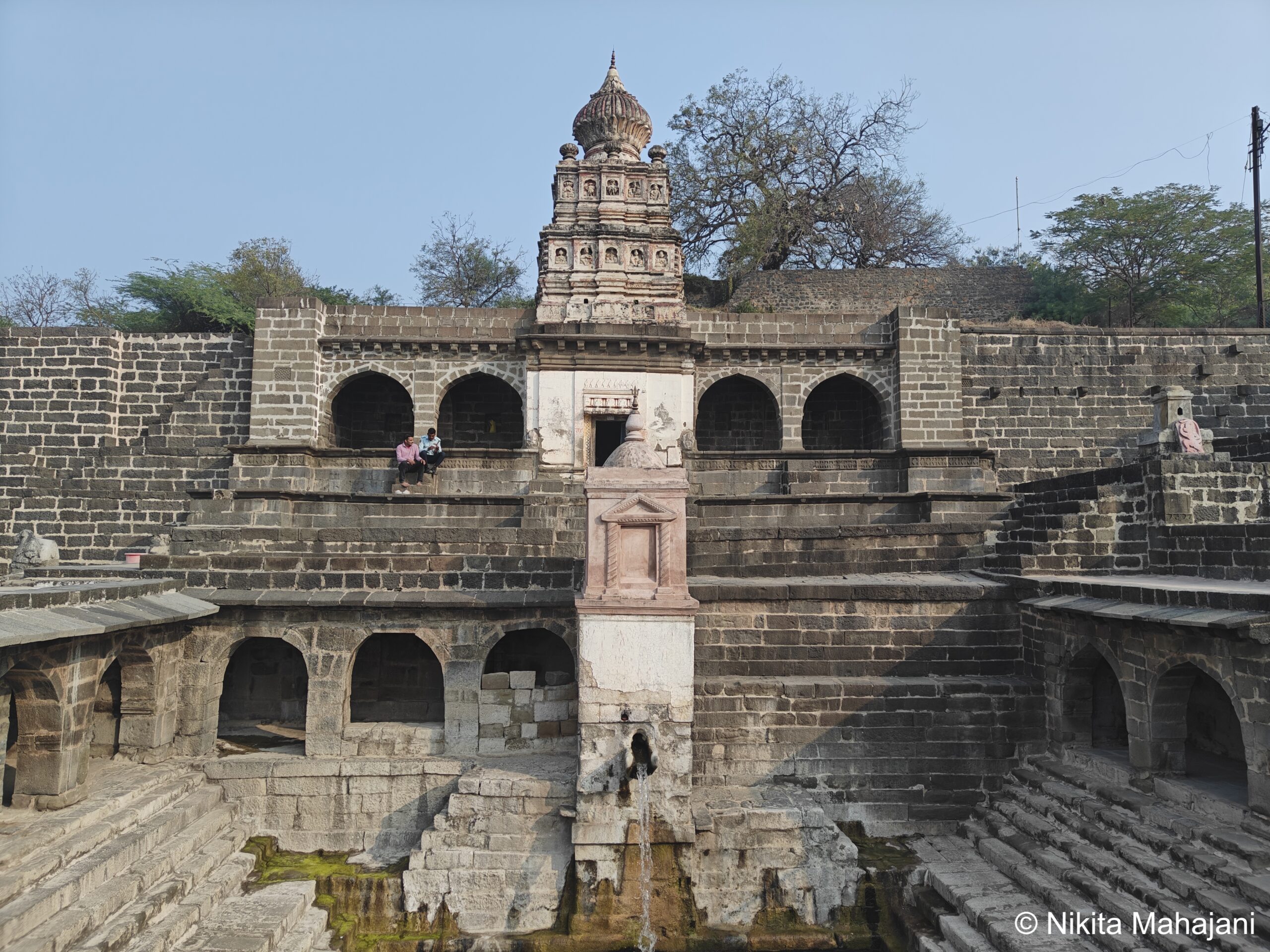
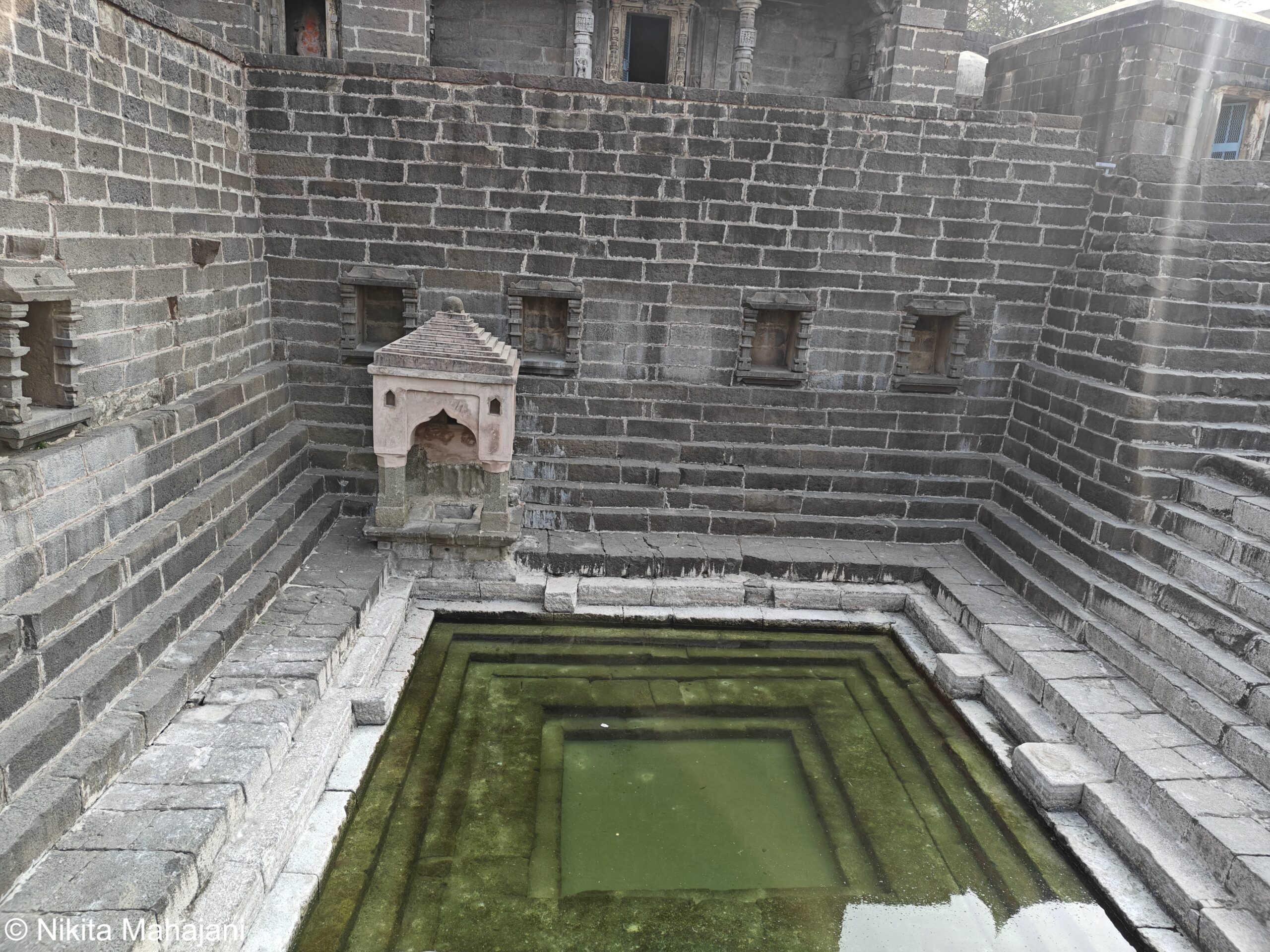
After exploring the Gomukh Dhar temple, one needs to descend a flight of steps.
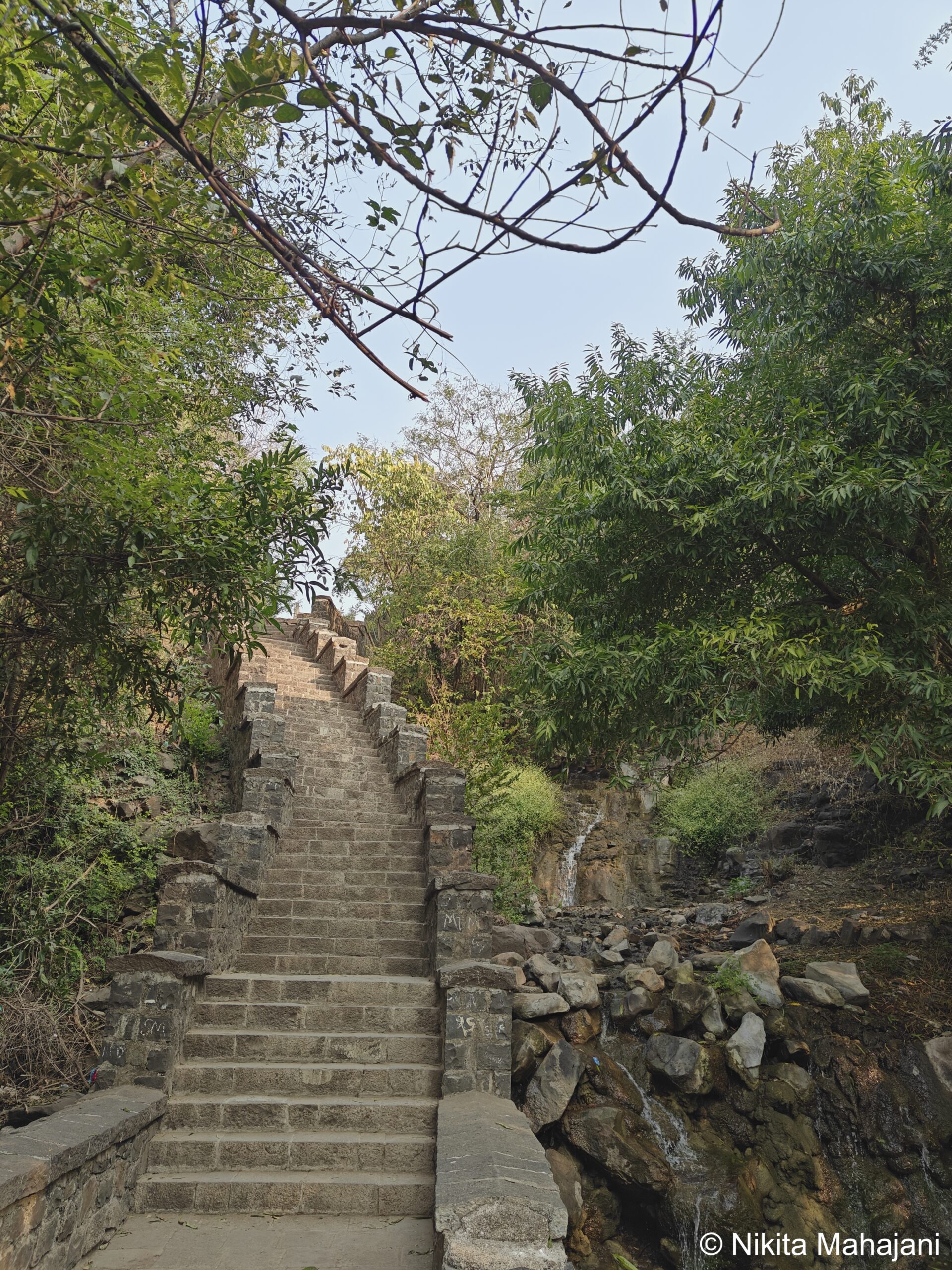
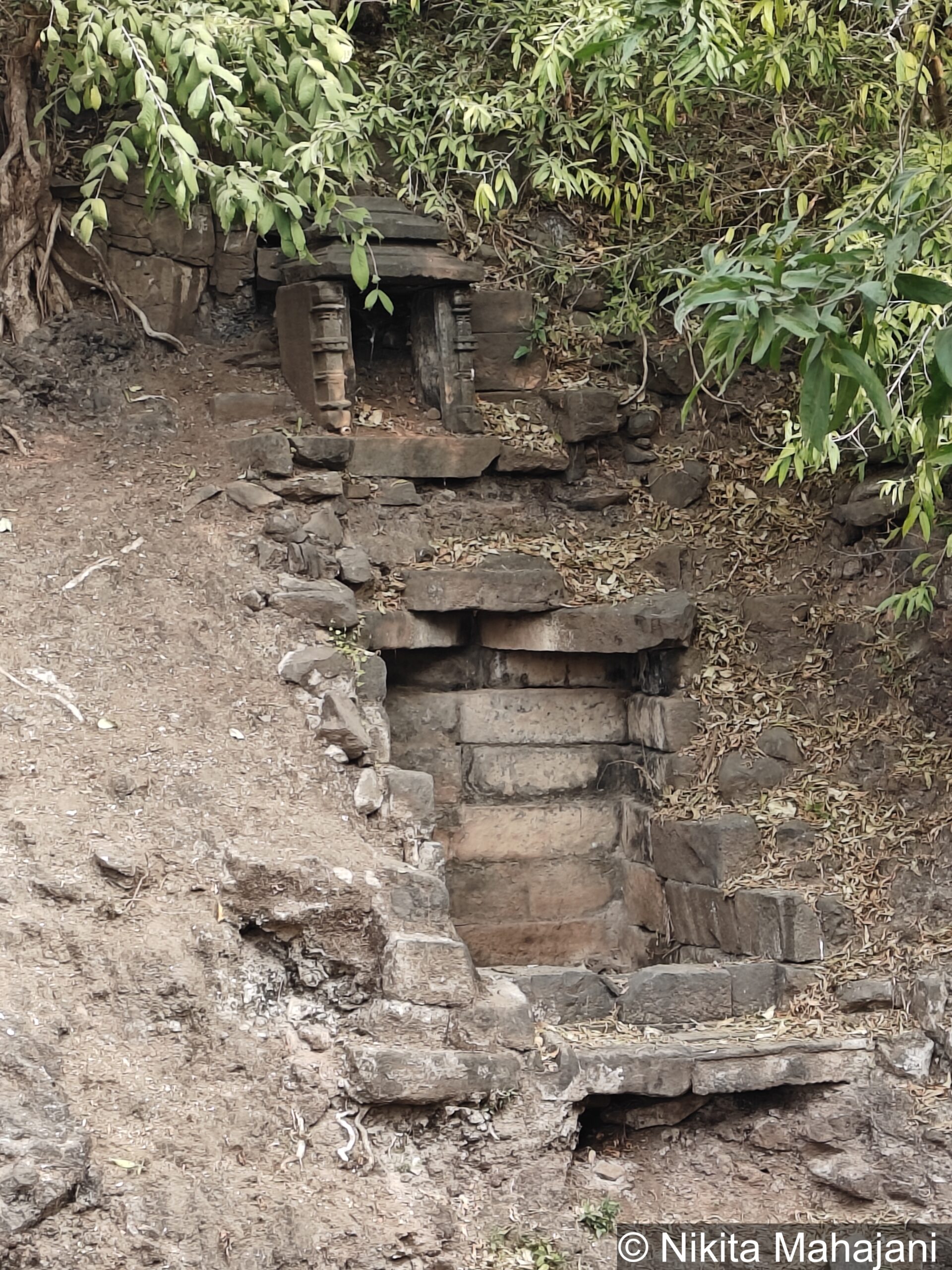
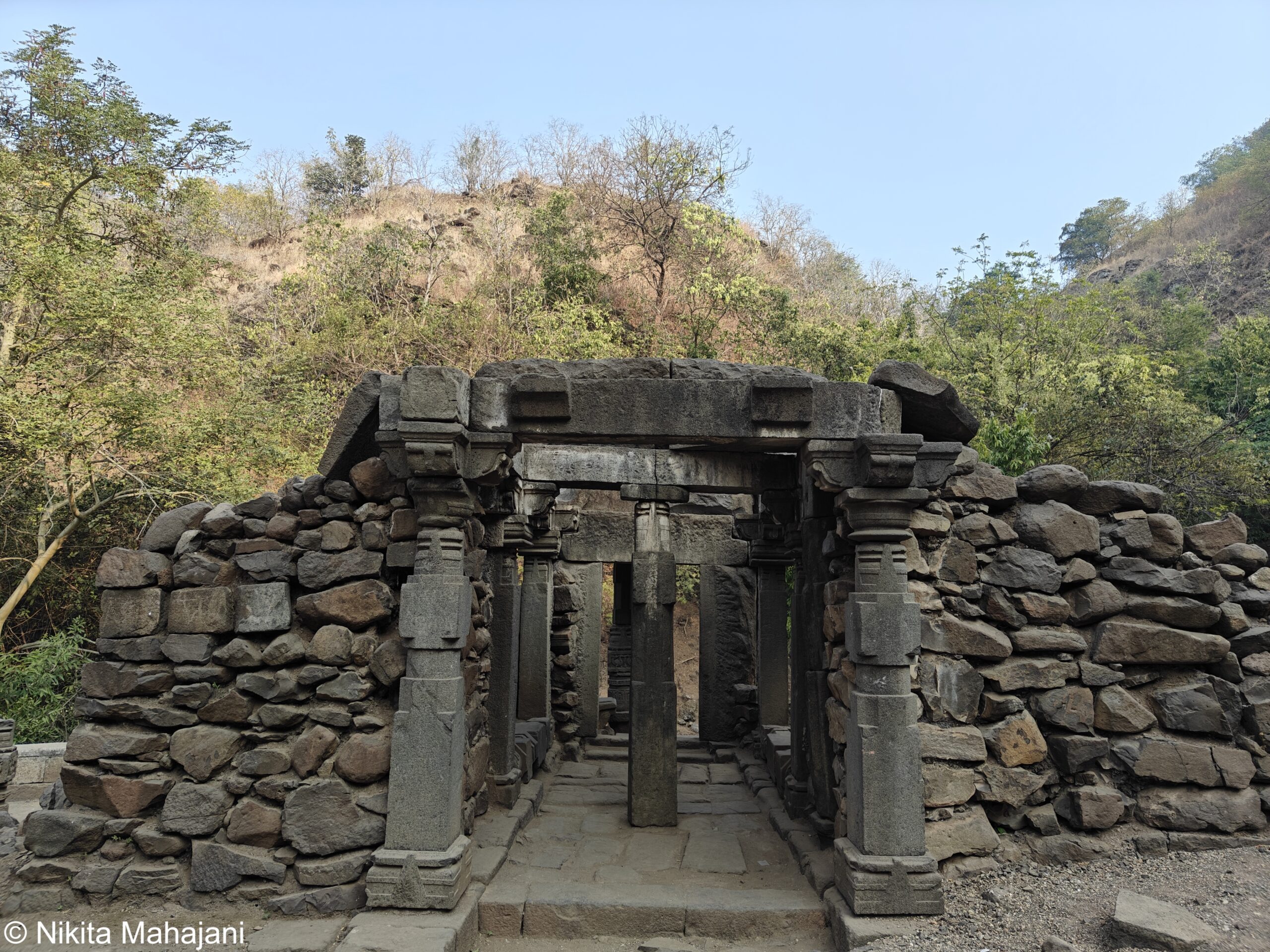
Stone steps connect the Gomukh Temple to the Kumareshwar Temple, providing an easy descent to this sacred site. Located within the Lonar Crater, directly opposite Seeta Nhani (believed to be Mother Seeta’s bathing place), the Kumareshwar Temple is dedicated to Lord Shiva. Originally constructed during the reign of the Rashtrakuta kings, the temple underwent modifications in later periods. It is mentioned in ancient Indian literature, Viraj Mahatmya, which recounts two fascinating stories about Lord Kumareshwar.
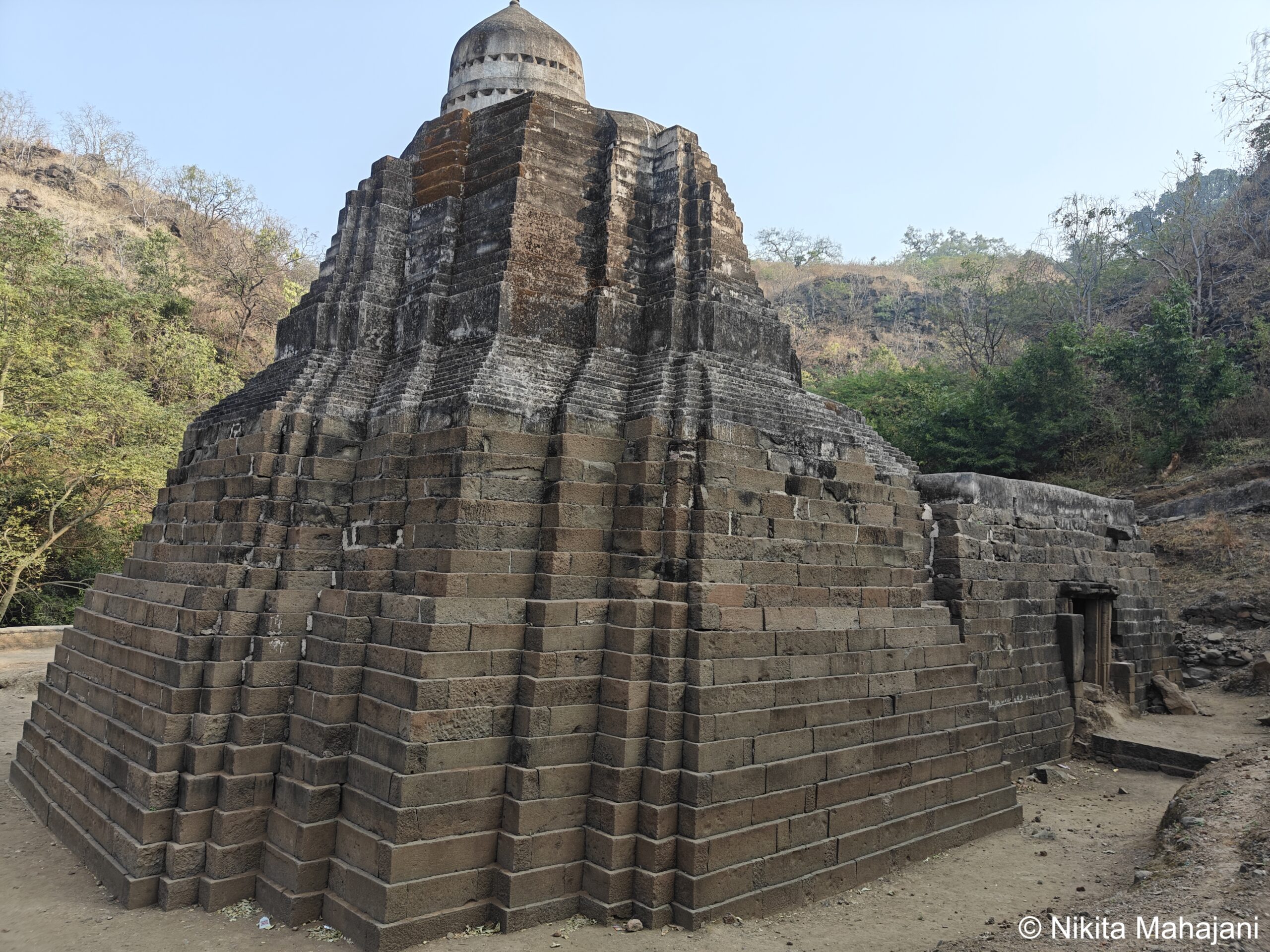
One needs to descend a flight of steps beyond the Shri Kumareshwar Temple to reach the forest officer’s check point. To go beyond this point, there is a charge of Rs.40 per person.
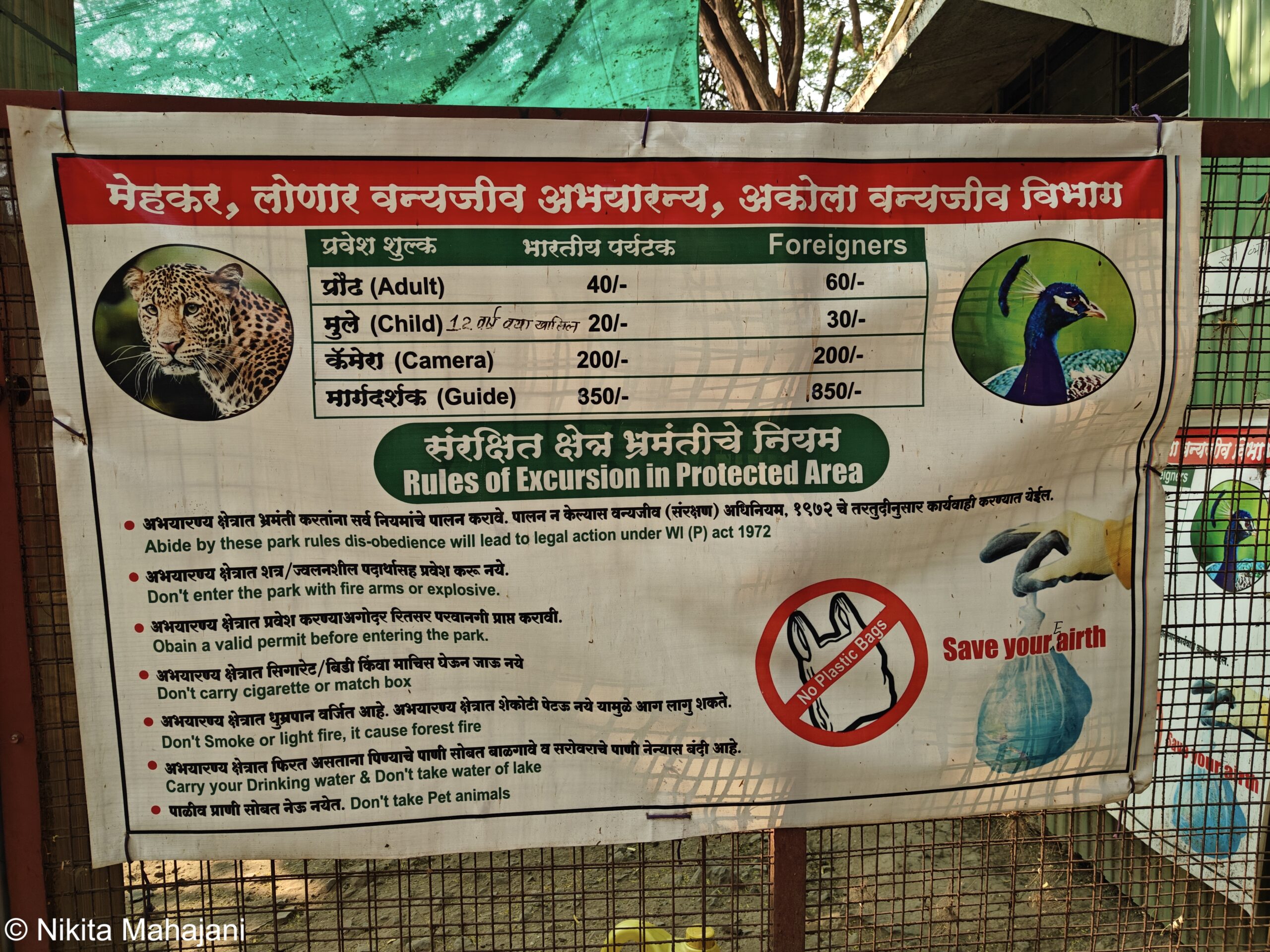
After walking a little ahead of the Forest check point, we came across the Shri Yadneshwar Mahadev Temple which is quite well maintained.
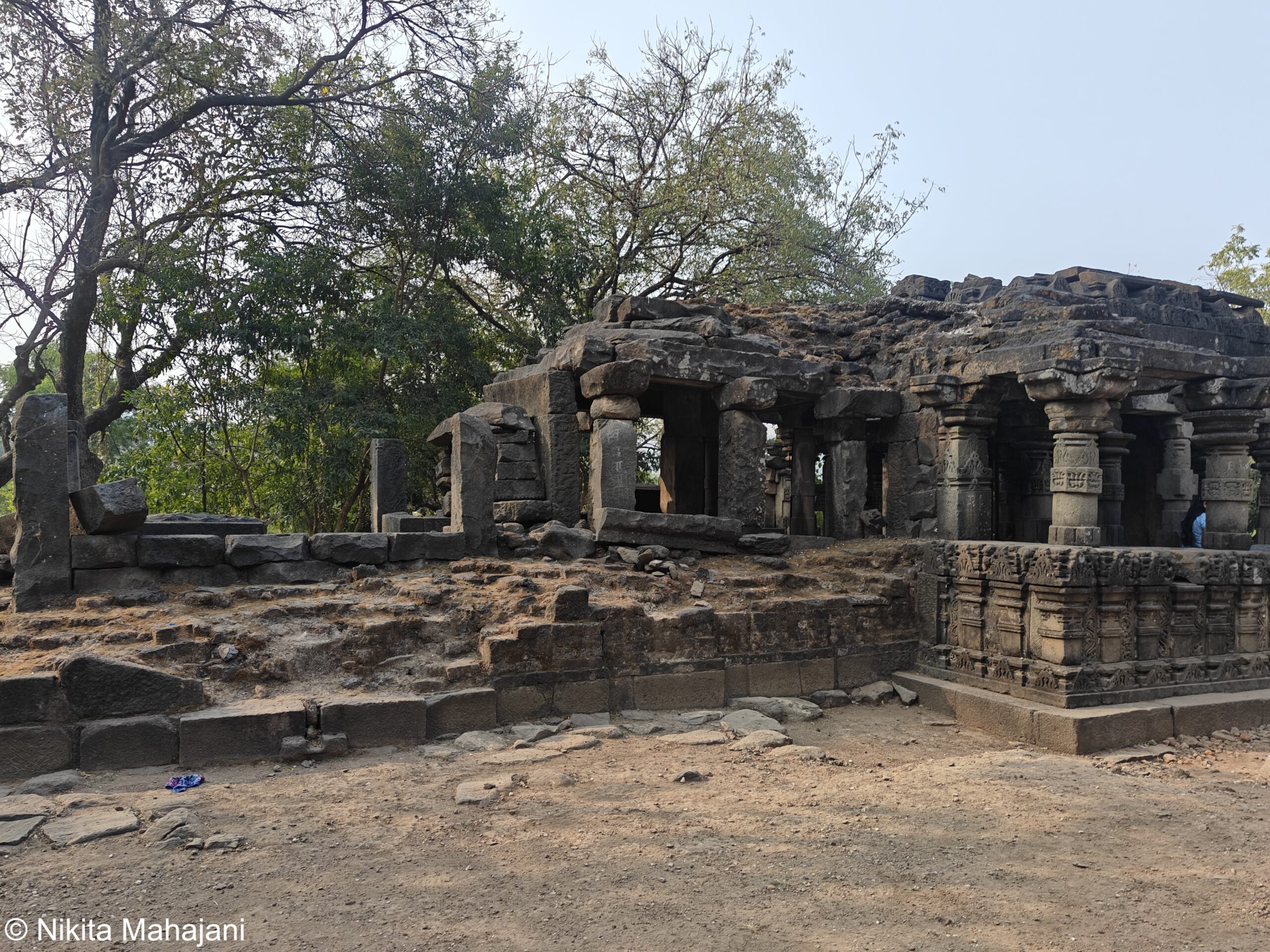
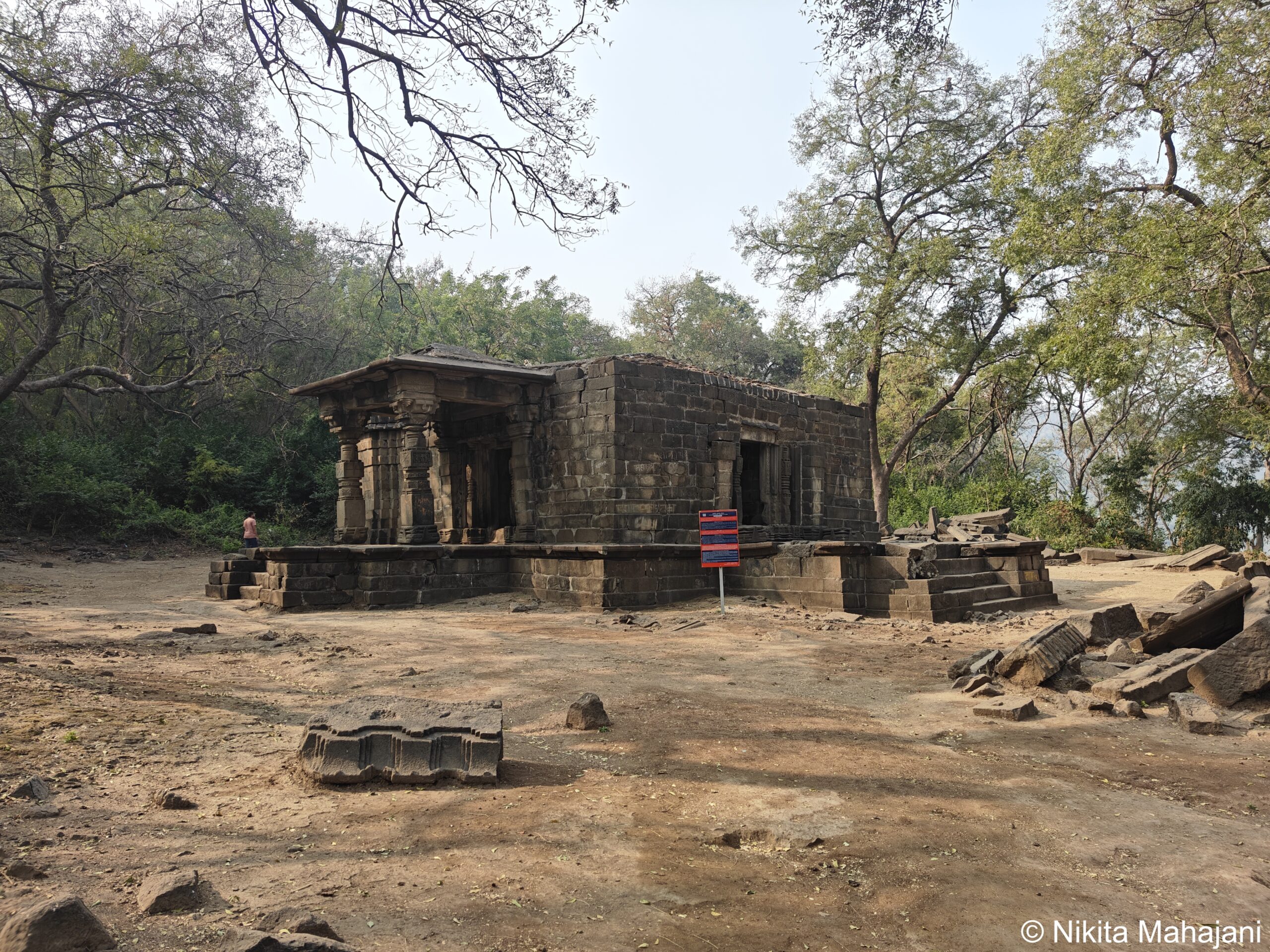
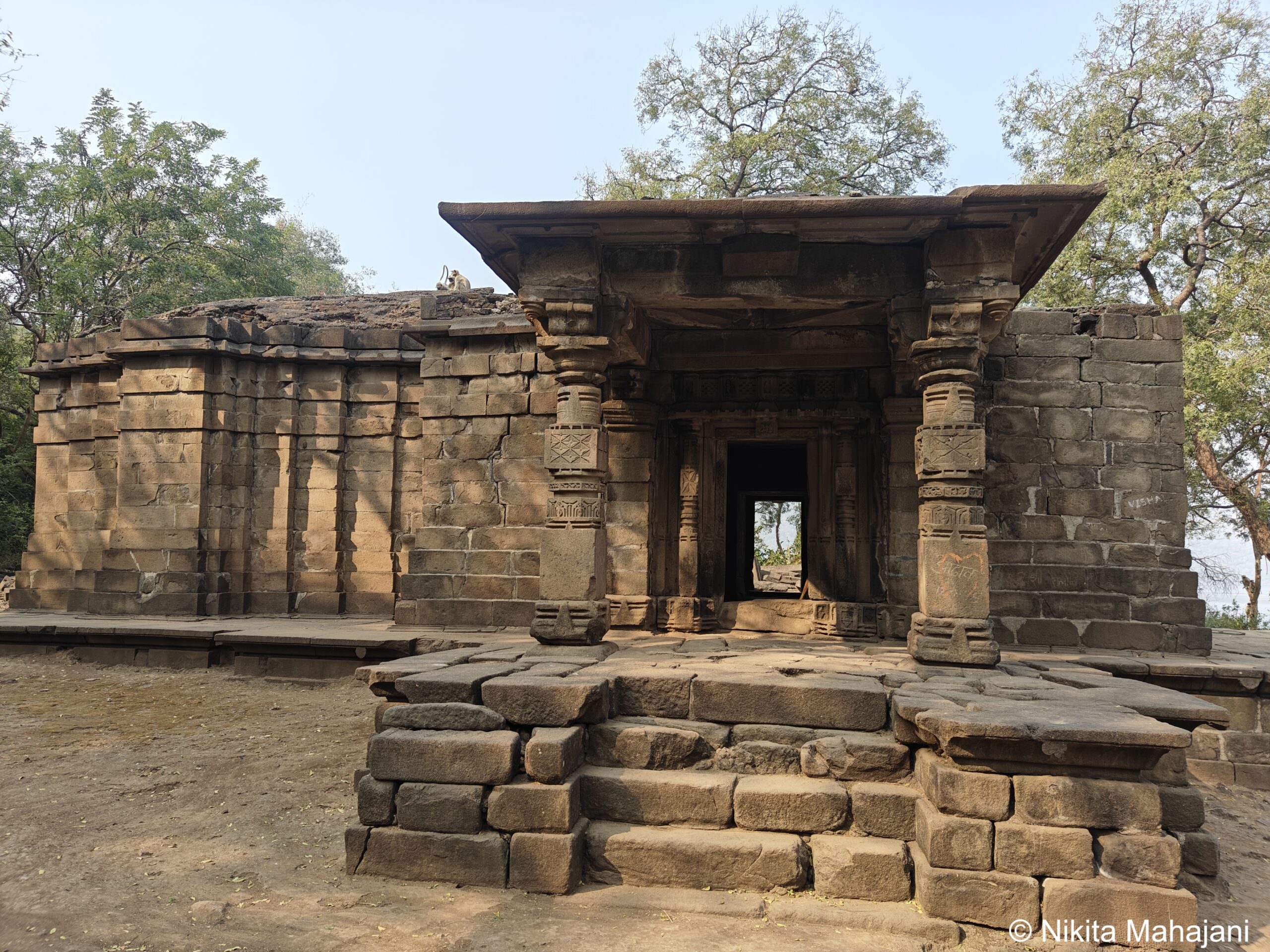
The Mor Mahadev Temple was inaccessible since it was partially submerged in water.
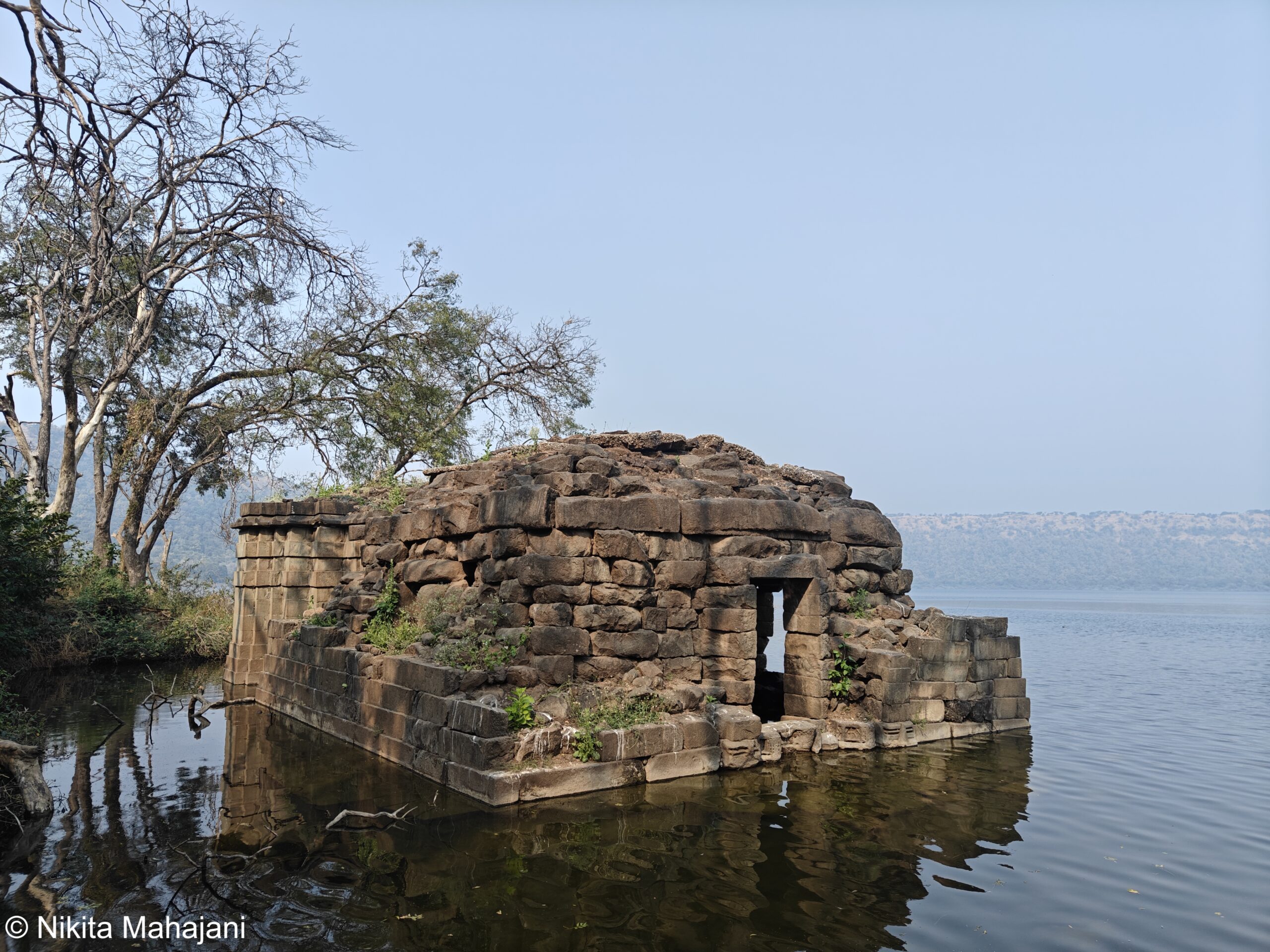
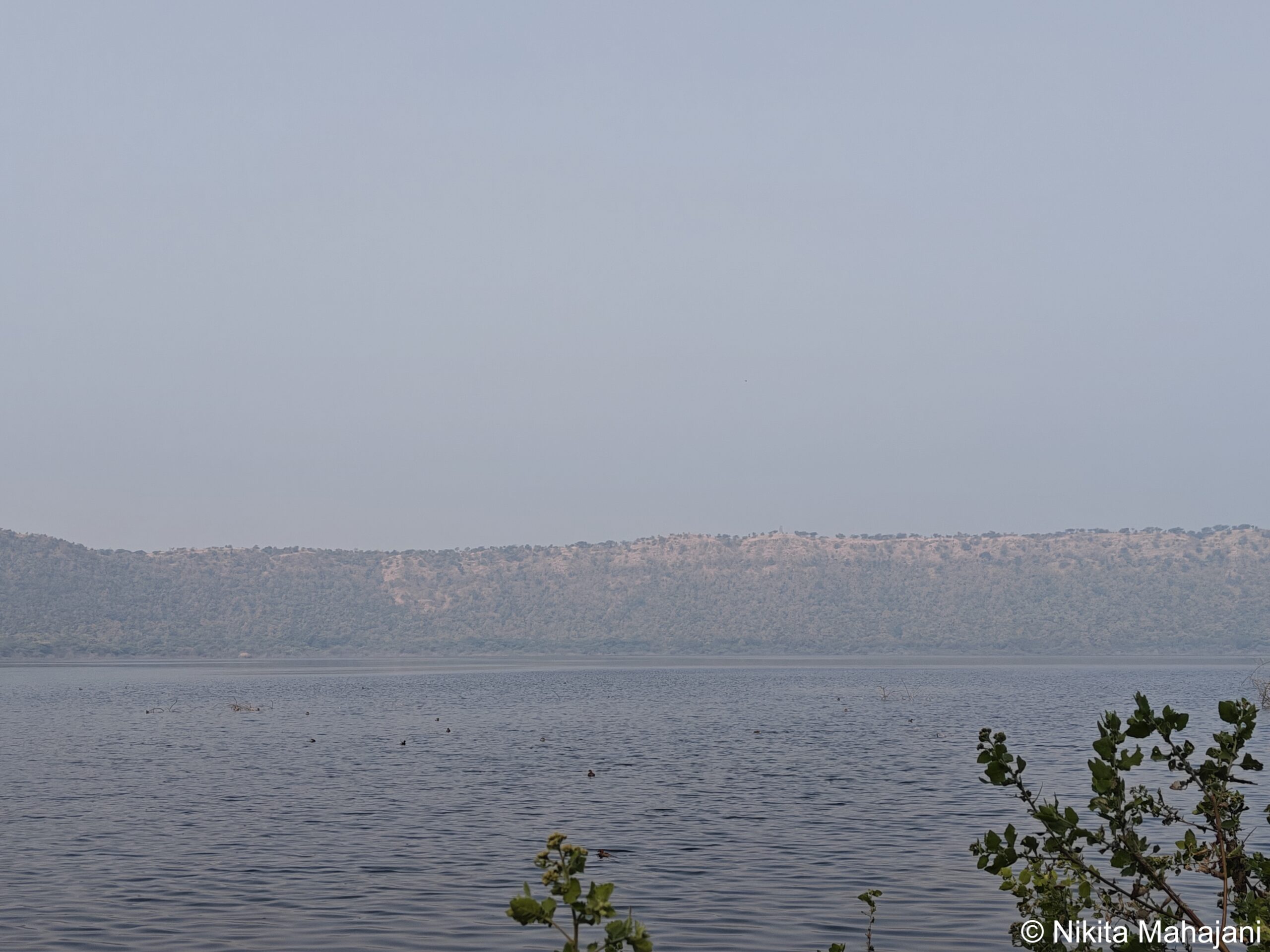
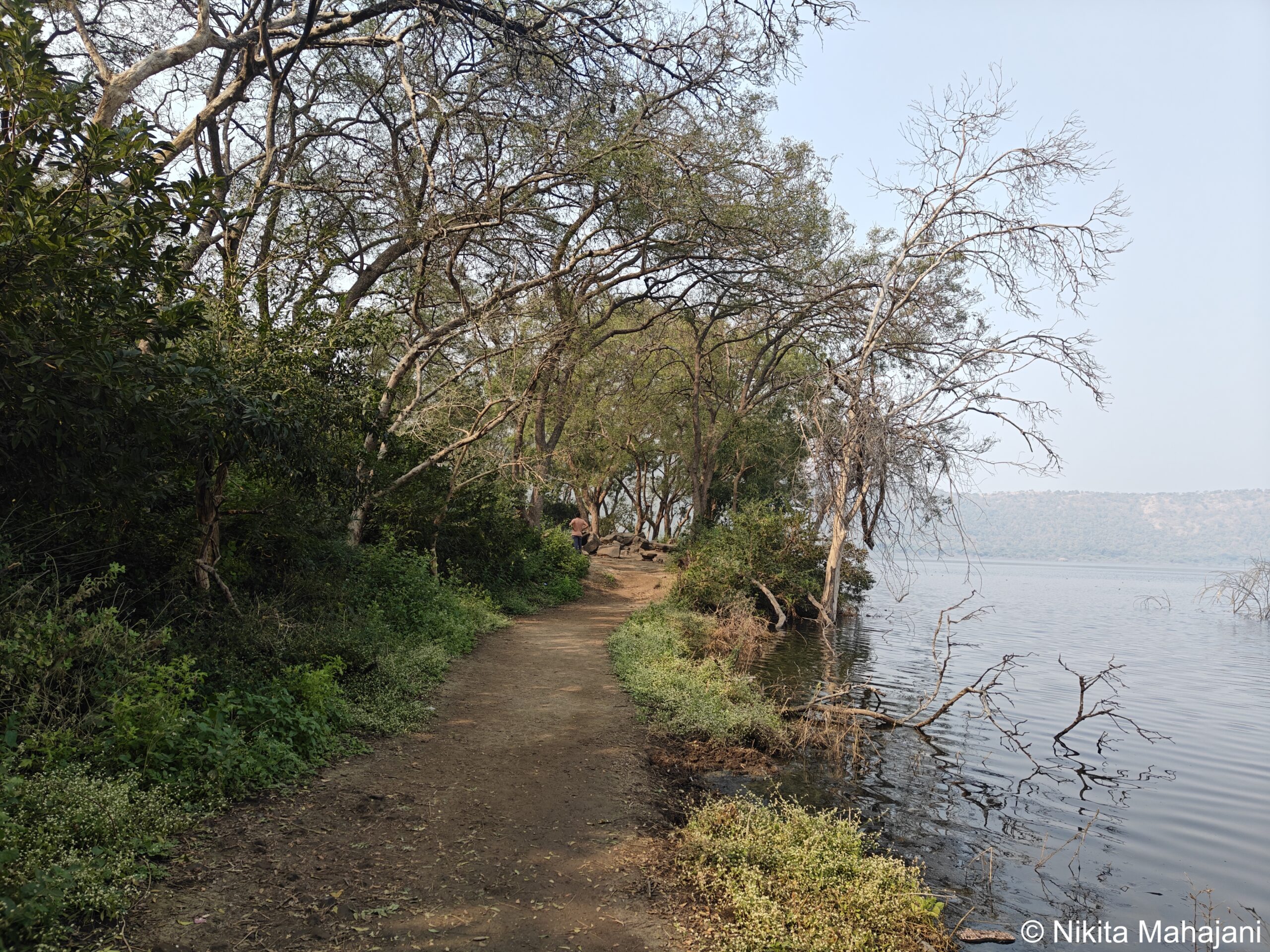
The trail upto the Mor Mahadev Temple was through a dense jungle. But the trail beyond Mor Mahadev Temple is abutting the Lonar crater. Here onwards we could see the lake water towards our right hand side till the end of the Lonar Parikrama.
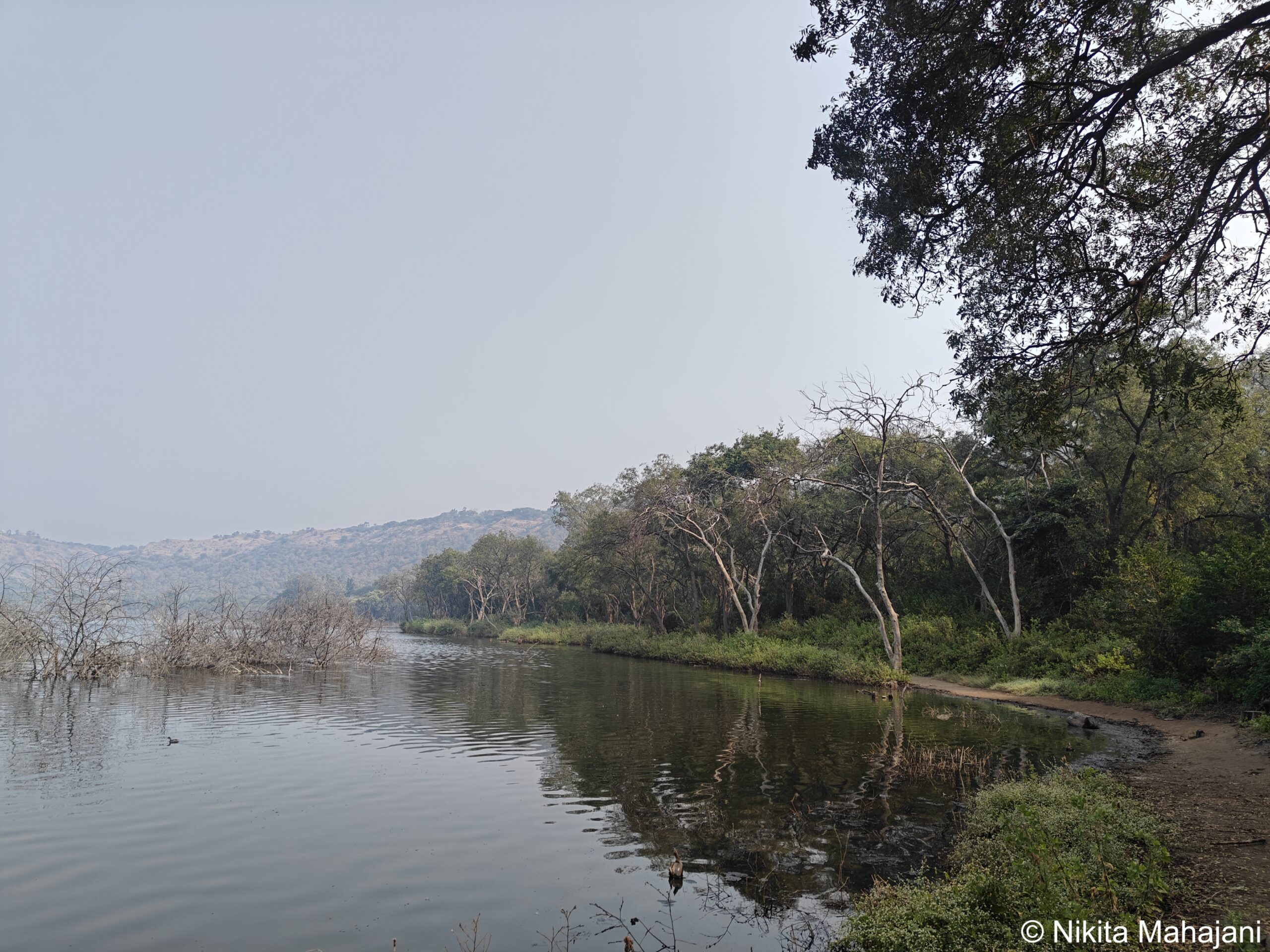
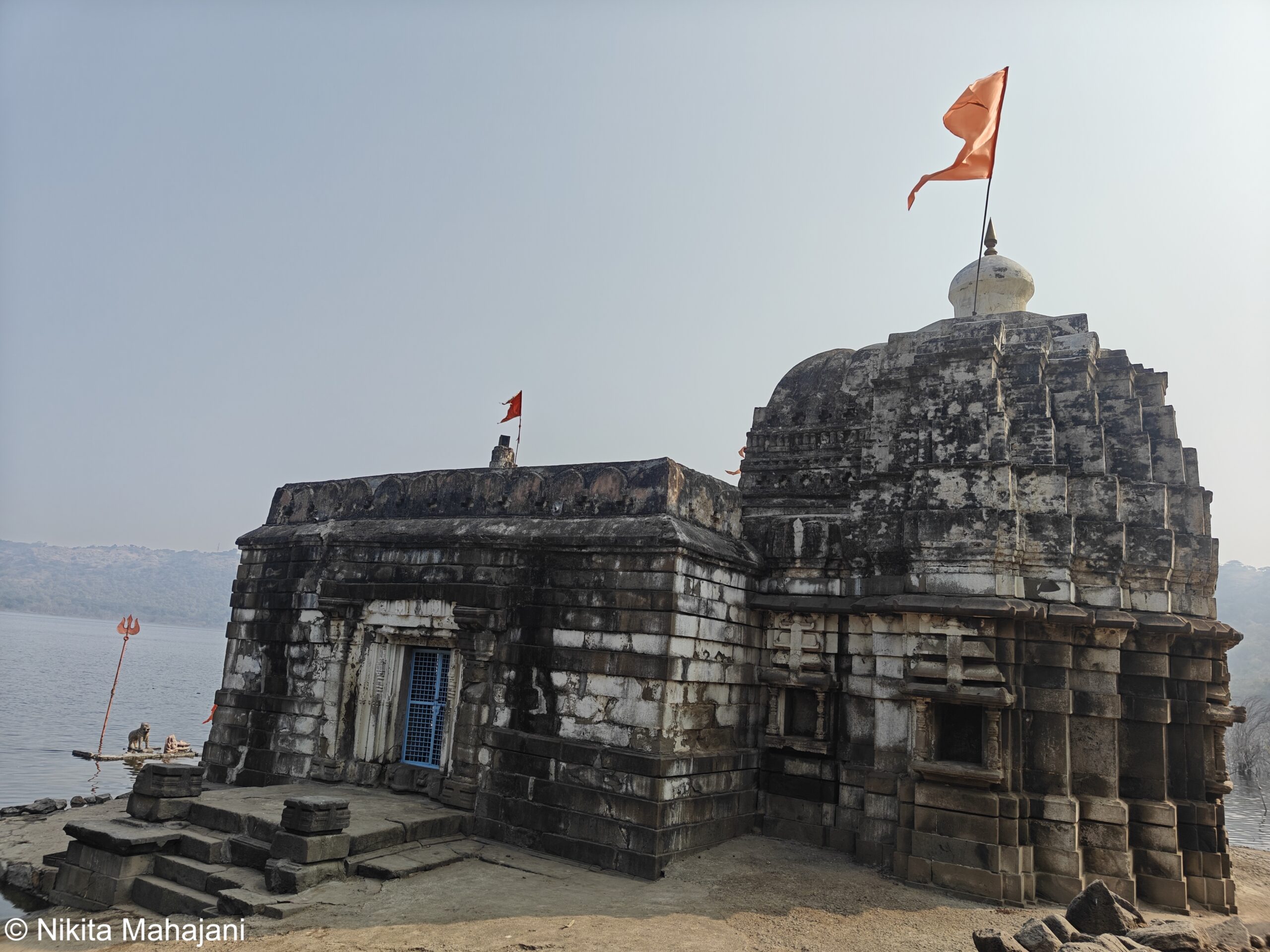
Kamalja Devi Temple is the last accessible temple that we could visit in the Lonar Parikrama. The temples beyond this point are partially submerged and there is no pedestrian route to reach till those temples. So we couldn’t complete the entire circle around Lonar crater. The parikrama ends at Kamalja Devi Temple for tourists.
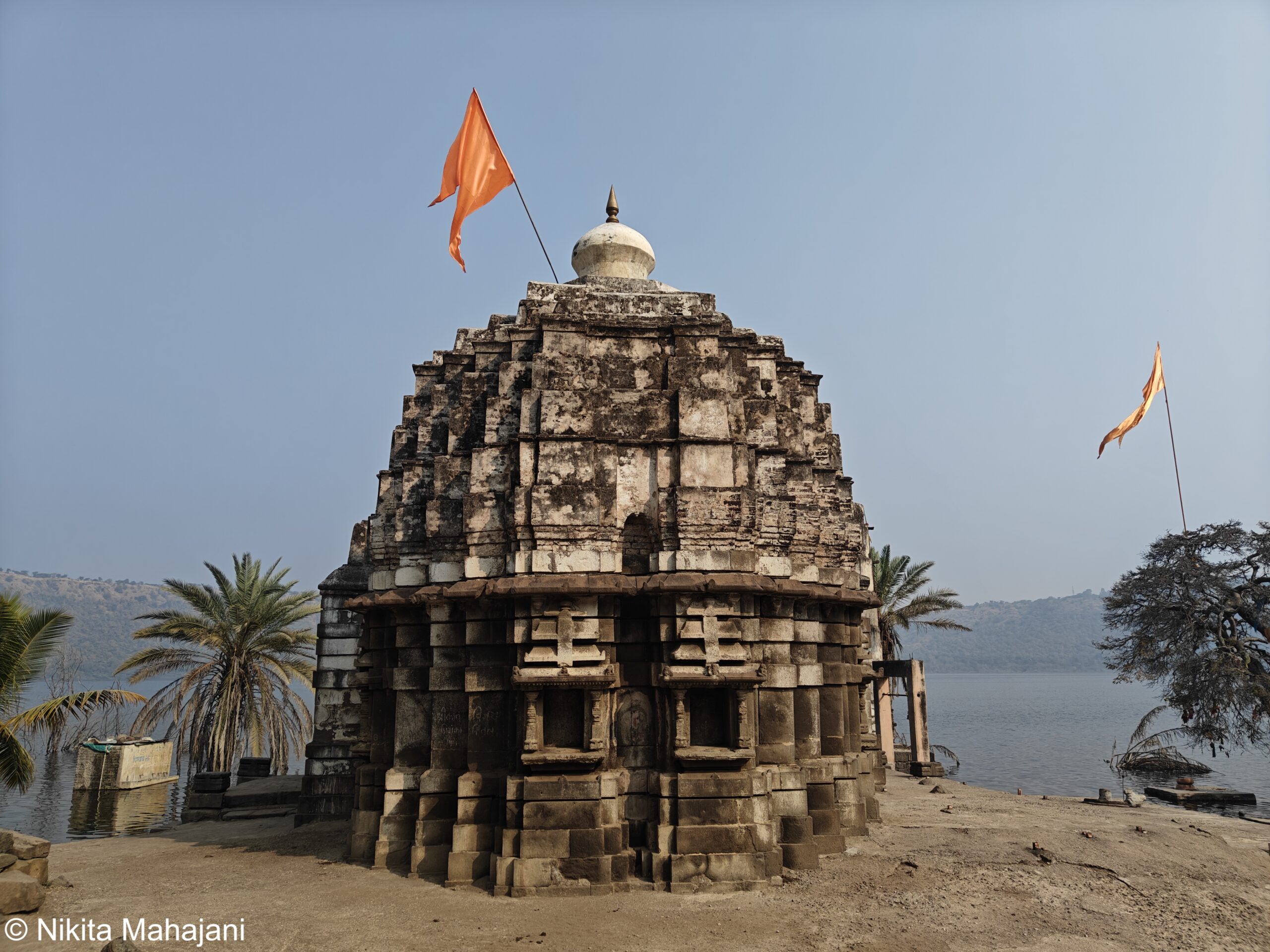
We started walking back to the entry point of Lonar crater. By this time, the weather was quite hot. We enjoyed eating some cut fruits sold at the entrance shacks.
We had lunch at Aaswad Veg Restaurant. Post-lunch, we explored Limbi Barav which is adjacent to Aaswad Veg Restaurant. The stepwell must have been looking like a beautiful piece of art during ancient times. But currently it is in a dilapidated condition. It is not maintained at all. There are slum encroachments from all sides. The approach road is in a poor state.
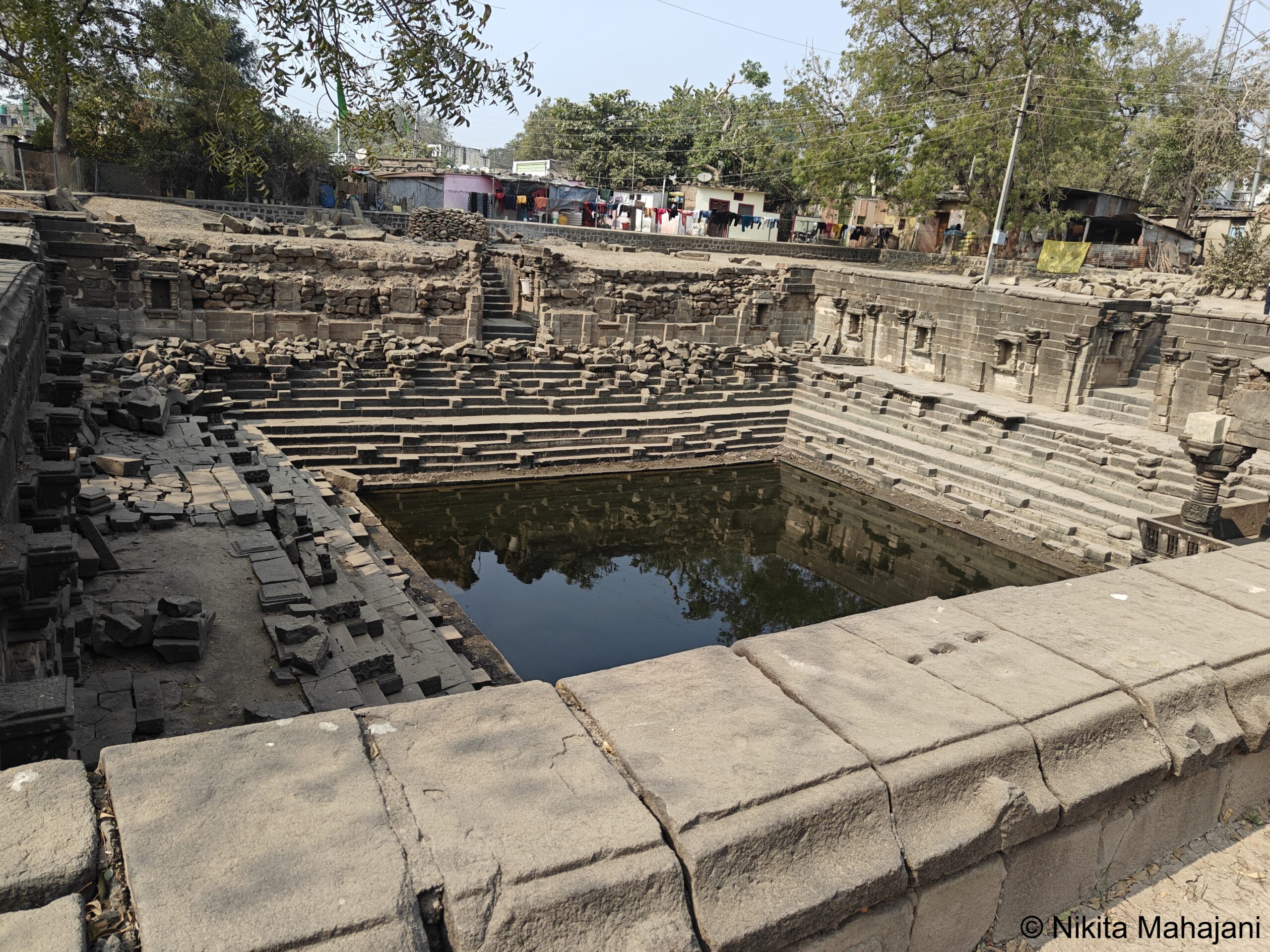
After visiting the Limbi Barav , we visited Daitya Sudan temple which is a little away from the crater. It is accessible by car through very narrow bylanes. The neighbourhood of Daitya Sudan Temple has a lot of beautiful old houses.
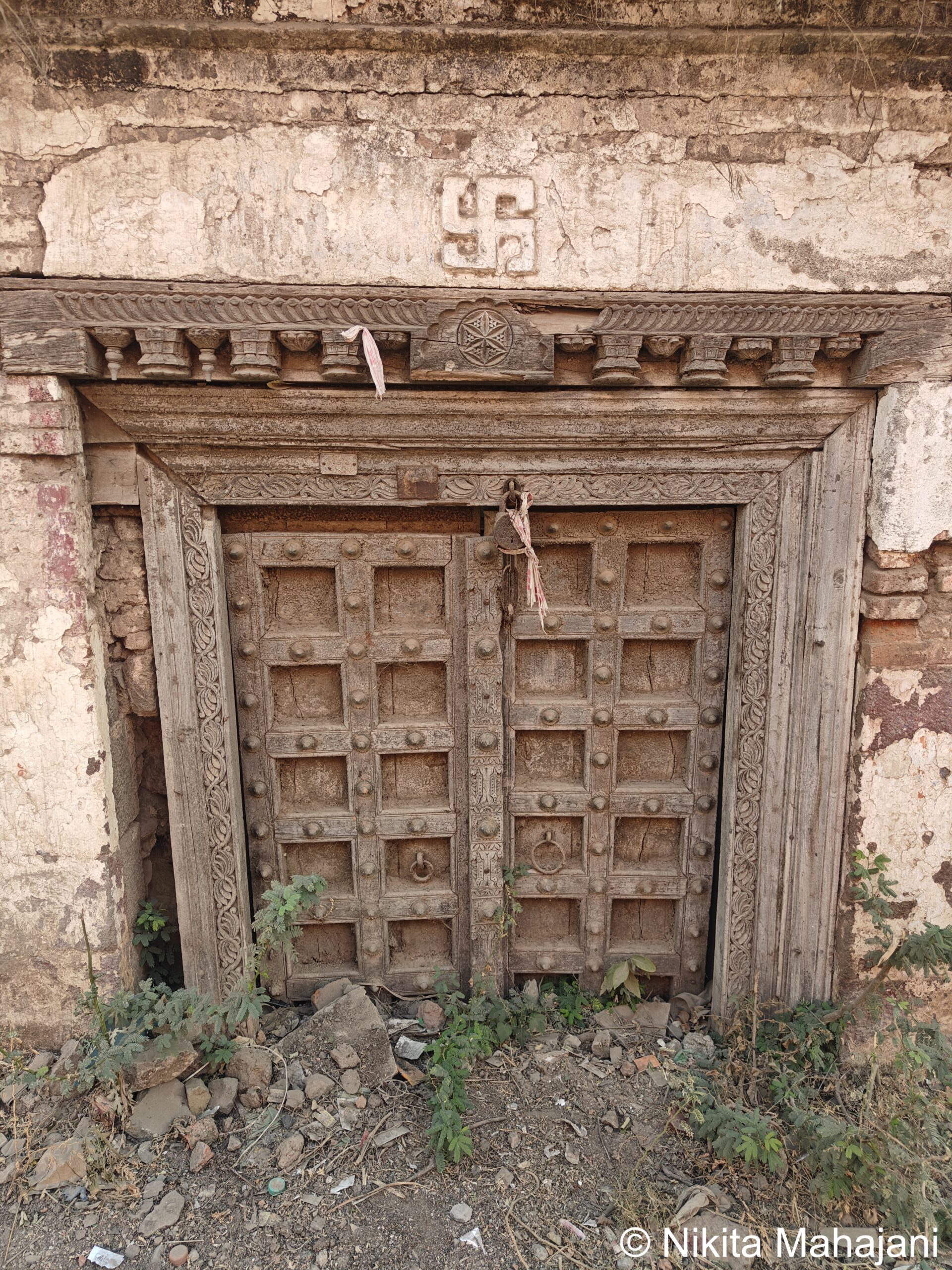
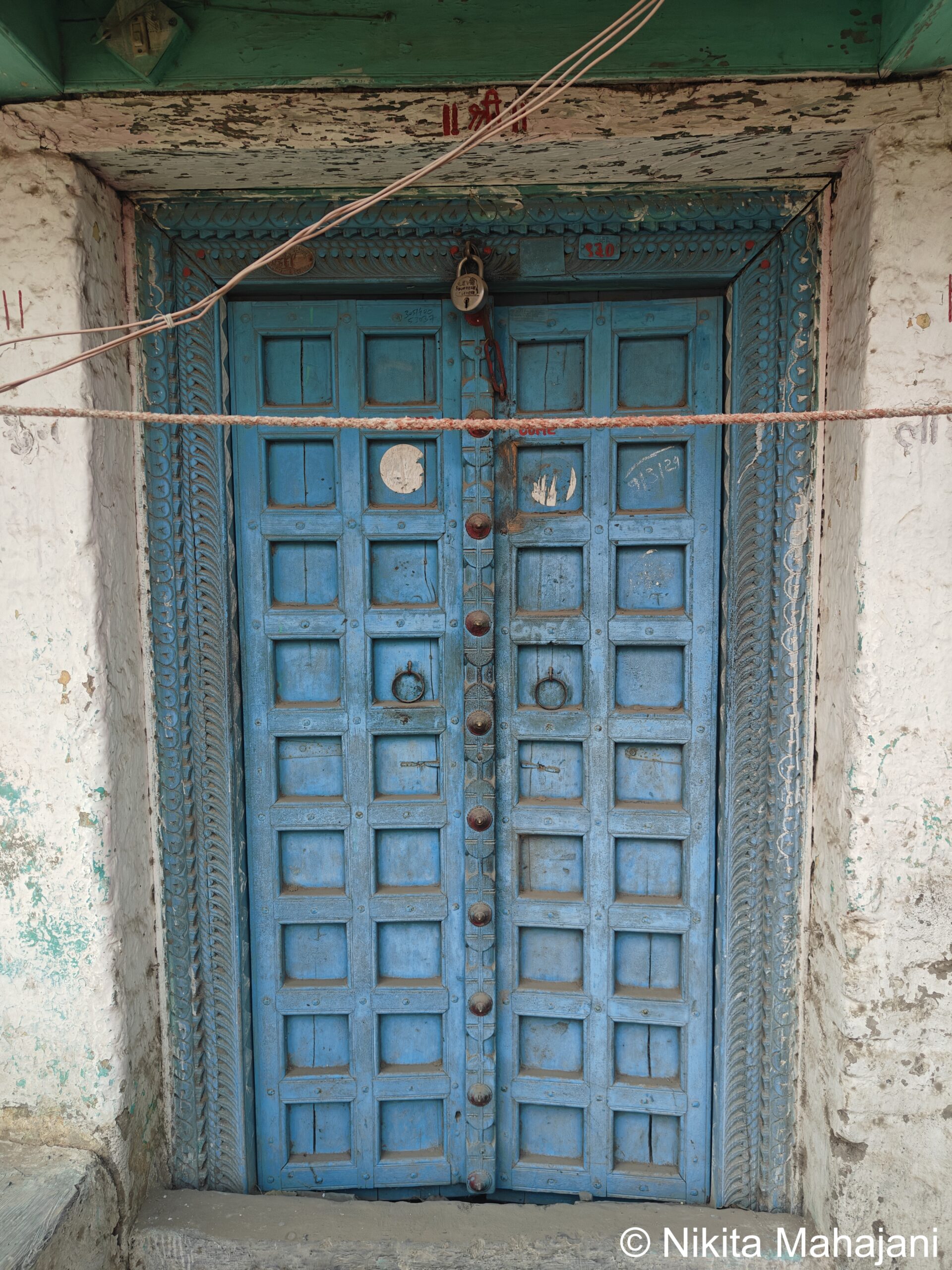
When we reached Daitya Sudan Temple, surprisingly there was not a single tourist in the premises.
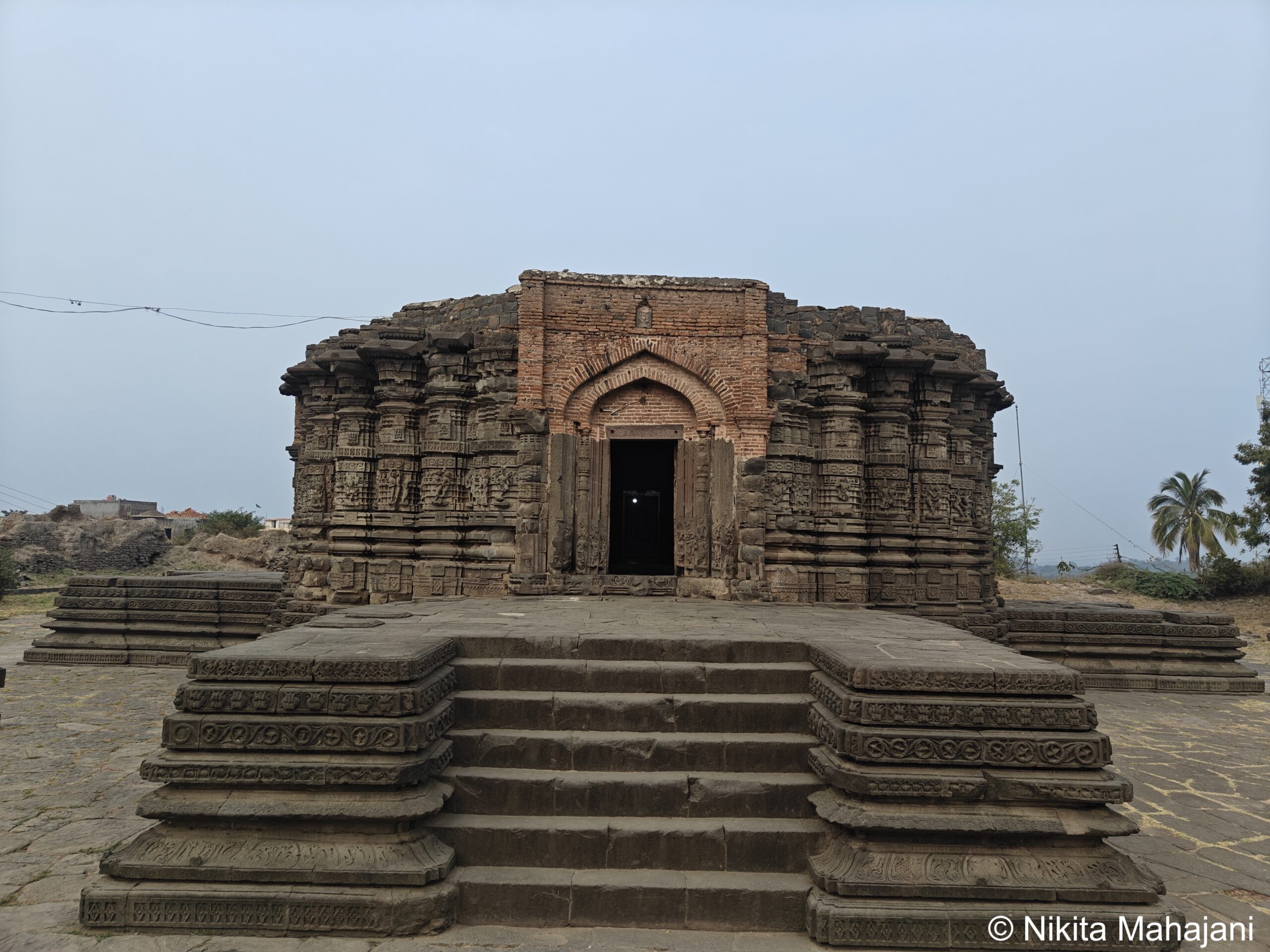
The Daitya Sudan Temple is an architectural marvel that dates back to the Chalukya dynasty, which ruled parts of Central and Southern India between the 6th and 12th centuries. Dedicated to Lord Vishnu in his fierce Daityasudan avatar (the slayer of demons), this stunning temple is a must-visit for lovers of history, architecture, and mythology.
Built in the distinctive Hemadpanthi style, the temple features an asymmetrical star-shaped design. Its exterior walls are adorned with intricate and, at times, sensual carvings reminiscent of the famed Khajuraho temples. These richly detailed sculptures are also similar in style to those found at Badami and Pattadakal — a tribute to the glorious legacy of the Chalukyas.
The idol of Vishnu, depicted standing over a demon, is made of iron ore that curiously resembles stone, adding an air of mystery to the sanctum. The original idol went missing long ago and was later replaced by the Bhosale rulers of Nagpur. Step inside the Garbha Griha (inner sanctum), and you’ll find yourself in near darkness — only a torch reveals the delicate carvings hidden within.
The temple follows a three-chamber layout. The middle chamber, or Antaral, is used for individual rituals and pujas. Its ceiling showcases captivating carvings of mythological episodes like the slaying of Lavanasura, the origin of Lonar Lake, tales of Krishna and Kansa, the Narasimha avatar vanquishing Hiranyakashyap, and the divine Rasleela.
The outermost chamber, known as the Sabhamandapa (assembly hall), leads you to this treasure trove of heritage. The elevated plinth, around 1.5 meters high, supports what appears to be an unfinished roof — possibly intended to be a grand pyramidal shikhara.
Interestingly, a sculpture of Surya (the Sun God) at the back of the temple hints that it may have originally been a sun temple, though today it is revered as a Vishnu shrine. The temple’s weather-worn stones still whisper stories from the Puranas through their elaborate carvings, making it a fascinating stop for curious travelers and culture seekers alike.
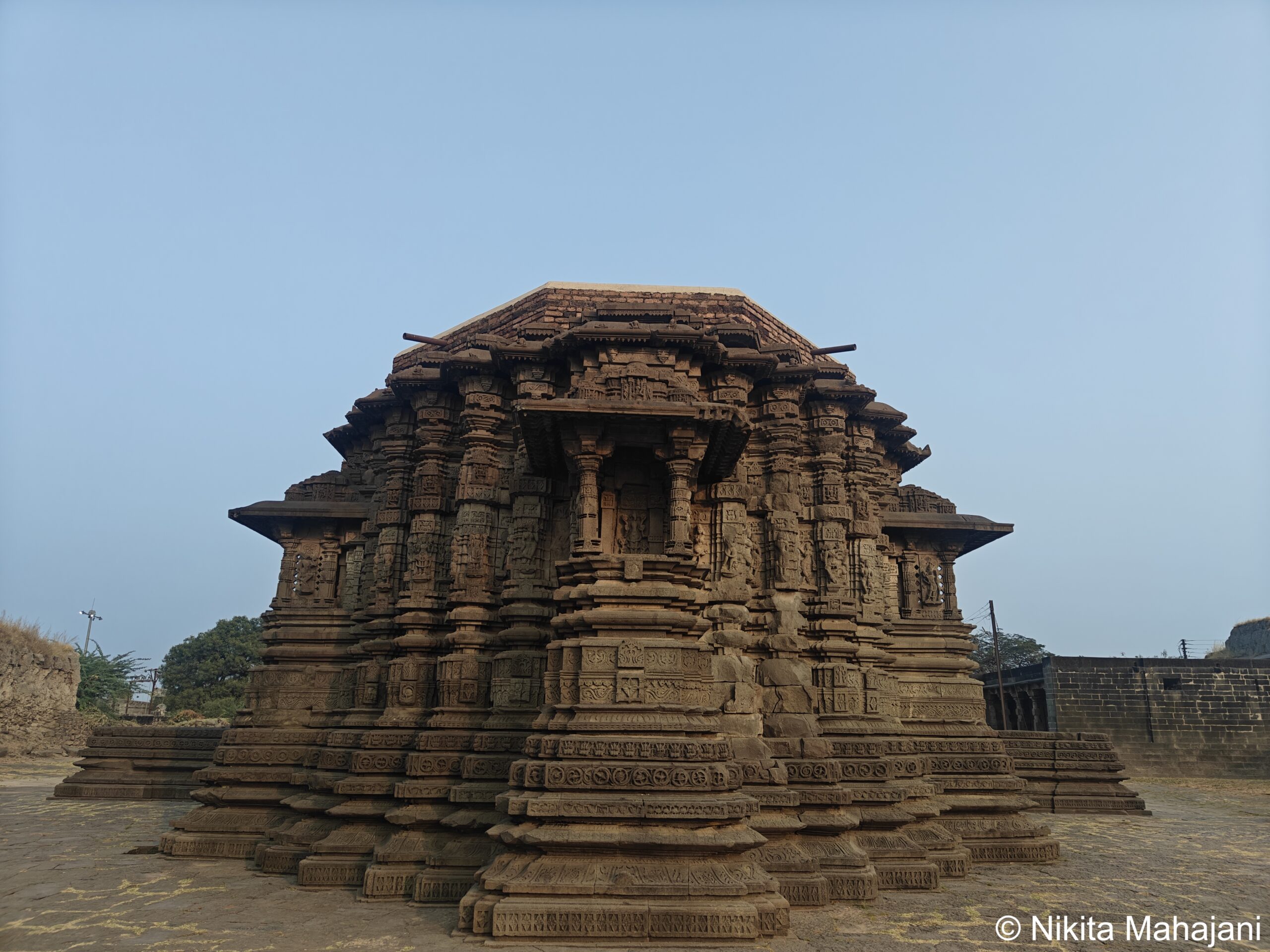
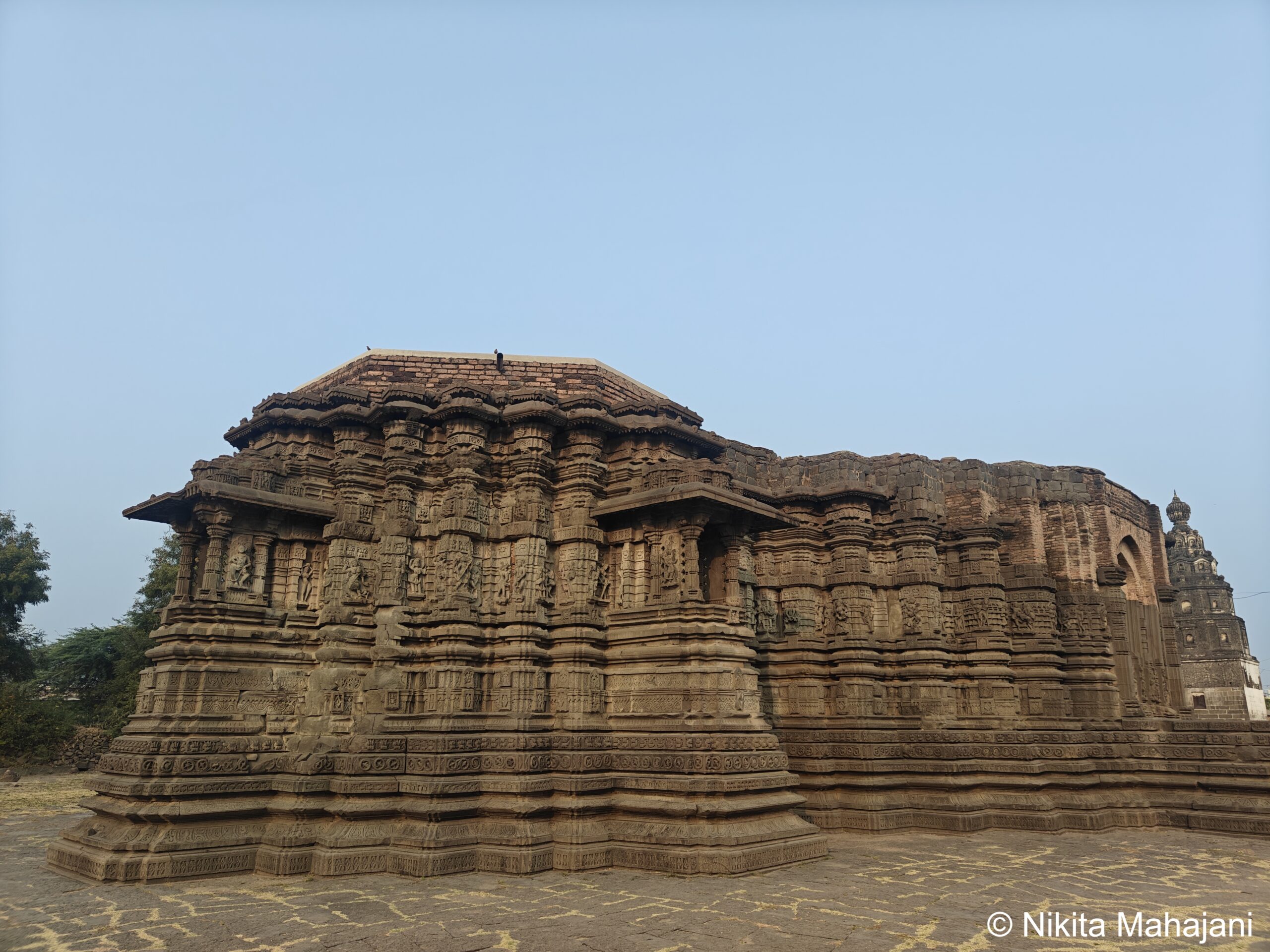
We wrapped up the day with a peaceful evening at the MTDC resort, Lonar.
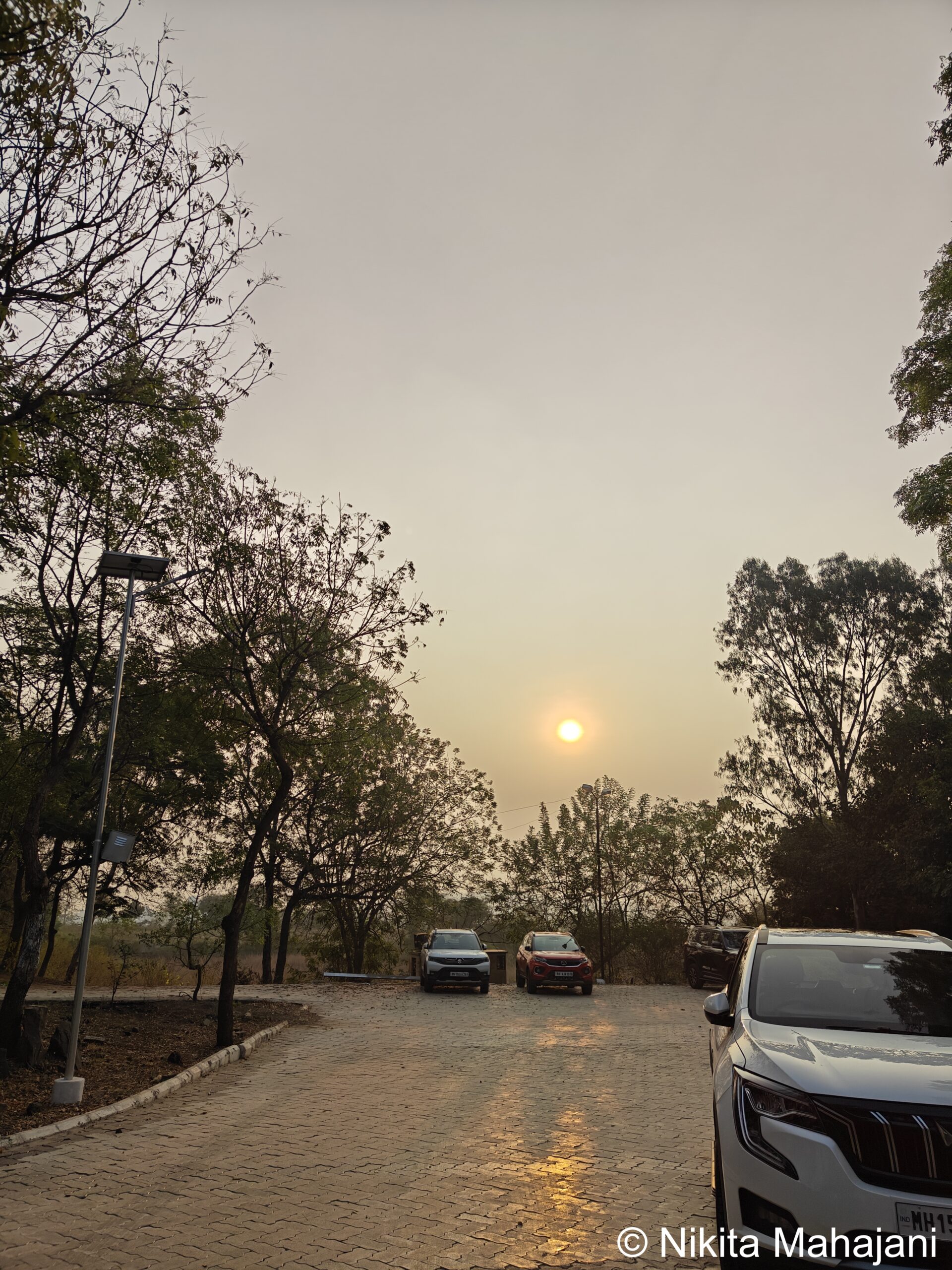
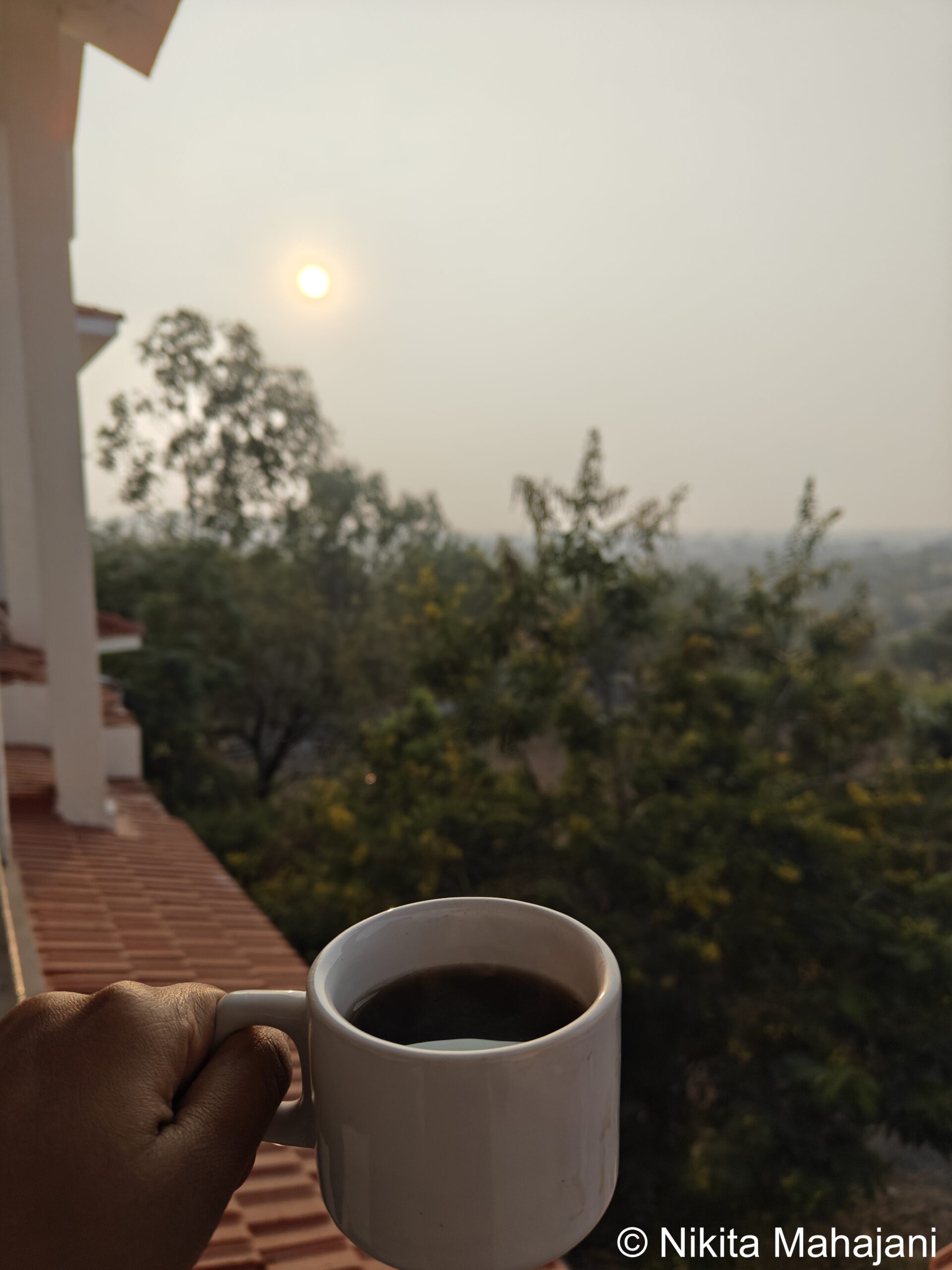
To read the next blog on Day 03: Chalisgaon, click here.
Where did we stay ?
Where did we eat ?
Hotel Vikrant, Lonar.
Aaswad Veg Restaurant, Lonar
